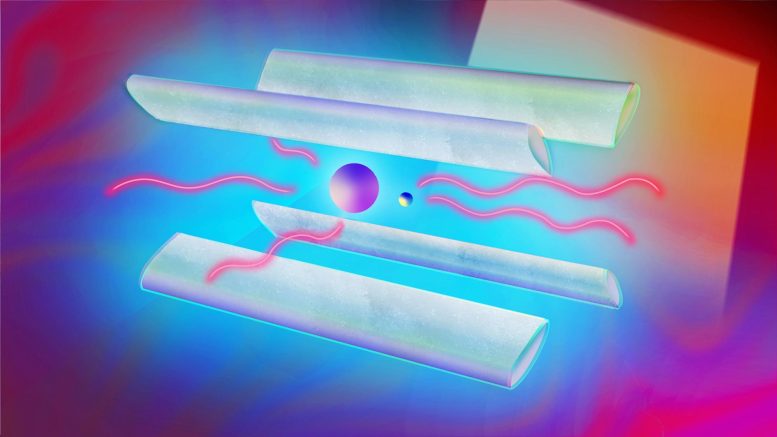
Mismatched partners are being cooled: A single beryllium ion (red, left) and a single highly charged argon ion (purple, right) are bombarded by lasers from various sides and are almost brought to a complete standstill. Credit: PTB
QUEST researchers overcome a major hurdle on the journey towards even more accurate optical atomic clocks.
Laser beams can do more than just heat things up; they can cool them down too. That is nothing new for physicists who have devoted themselves to precision spectroscopy and the development of optical atomic clocks. But what is new is the extremely low temperature that researchers at the QUEST Institute at the Physikalisch-Technische Bundesanstalt (PTB) have been able to reach with their highly charged ions – this type of ion has never been cooled down as far as 200 µK before. The team working on this succeeded by combining their established methods which include the laser cooling of coupled ions and methods from the field of
As he and his team are naturally very experienced in applying the laws of quantum mechanics (coupled cooling is, after all, based on quantum laws), they have made use of the toolkit of the quantum computing researcher. Quantum algorithms – i.e. computer operations that are based on manipulating individual quanta – cannot only be used to perform calculations faster than ever before with a quantum computer. They can also help to extract kinetic energy from the mismatched ion pair. During the process of so-called algorithmic cooling, quantum operations are used to do just that: to transfer the energy from the barely coolable motion of the spectroscopy ion to the easily coolable motion of the logic ion.
And they managed to do this extremely well: “We were able to extract so much energy from the pair of ions – consisting of a singly charged beryllium ion and a highly charged argon ion – that their temperature finally dropped to only 200 µK,” said one of QUEST’s PhD students Lukas Spieß. Such an ensemble has never been so close to